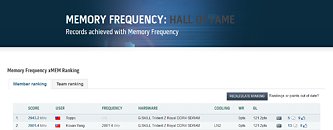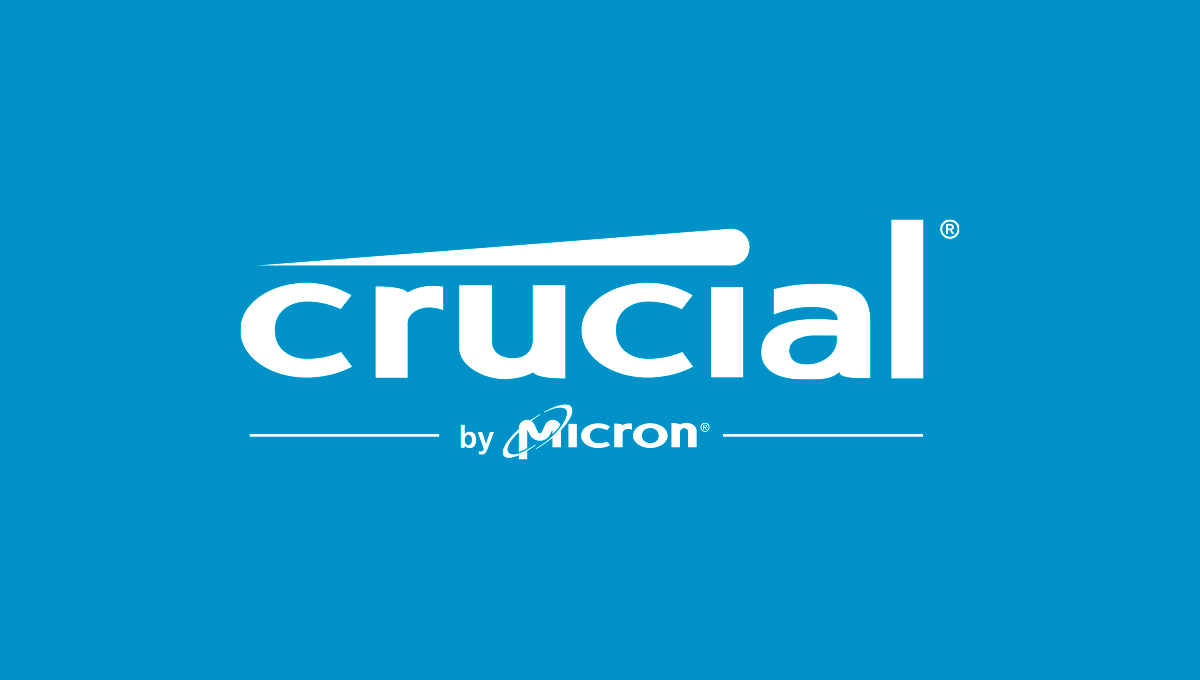- Joined
- Oct 9, 2007
- Messages
- 47,731 (7.42/day)
- Location
- Dublin, Ireland
| System Name | RBMK-1000 |
|---|---|
| Processor | AMD Ryzen 7 5700G |
| Motherboard | Gigabyte B550 AORUS Elite V2 |
| Cooling | DeepCool Gammax L240 V2 |
| Memory | 2x 16GB DDR4-3200 |
| Video Card(s) | Galax RTX 4070 Ti EX |
| Storage | Samsung 990 1TB |
| Display(s) | BenQ 1440p 60 Hz 27-inch |
| Case | Corsair Carbide 100R |
| Audio Device(s) | ASUS SupremeFX S1220A |
| Power Supply | Cooler Master MWE Gold 650W |
| Mouse | ASUS ROG Strix Impact |
| Keyboard | Gamdias Hermes E2 |
| Software | Windows 11 Pro |
G.SKILL International Enterprise Co., Ltd., the world's leading manufacturer of extreme performance memory and gaming peripherals, is excited to announce that 23 overclocking records in various benchmark categories were broken during the Computex 2019 time frame, including the world record for the fastest memory frequency, all using G.SKILL DDR4 memory kits built with high performance Samsung 8Gb components, the latest Intel processors, and high performance motherboards.
This week at the G.SKILL Computex booth, a new world record for fastest memory frequency was set by Toppc, a renowned professional extreme overclocker, reaching an incredible DDR4-5886MHz using the Trident Z Royal memory on a MSI MPG Z390I GAMING EDGE AC motherboard and an Intel Core i9-9900K processor. At the end of Computex 2019, the top two results for the fastest memory frequency are set by team MSI using an identical hardware setup.



23 Overclocking Records Achieved
During the Computex 2019 time frame, 23 overclocking records were achieved. Among the records, the famous K|ngp|n overclocker broke a world record for 3DMark Time Spy with a quad-GPU setup of four EVGA GeForce GTX 1080 Ti K|ngp|n graphics cards and an 18-core Intel Core i9-9980XE processor. Additionally, a CPU-based benchmark world record was set by rsannino under Geekbench3 - Multi Core with the ASUS ROG Dominus Extreme motherboard and a 28-core Intel Xeon W-3175X processor, achieving an astounding score of 135527. This year, a vast majority of records were achieved with the ASRock X299 OC Formula motherboard and high-end, high core-count Intel processors, such as the 16-core i9-9960X and 18-core i9-9980XE processors, demonstrating the performance and efficiency of these processors.



View at TechPowerUp Main Site
This week at the G.SKILL Computex booth, a new world record for fastest memory frequency was set by Toppc, a renowned professional extreme overclocker, reaching an incredible DDR4-5886MHz using the Trident Z Royal memory on a MSI MPG Z390I GAMING EDGE AC motherboard and an Intel Core i9-9900K processor. At the end of Computex 2019, the top two results for the fastest memory frequency are set by team MSI using an identical hardware setup.



23 Overclocking Records Achieved
During the Computex 2019 time frame, 23 overclocking records were achieved. Among the records, the famous K|ngp|n overclocker broke a world record for 3DMark Time Spy with a quad-GPU setup of four EVGA GeForce GTX 1080 Ti K|ngp|n graphics cards and an 18-core Intel Core i9-9980XE processor. Additionally, a CPU-based benchmark world record was set by rsannino under Geekbench3 - Multi Core with the ASUS ROG Dominus Extreme motherboard and a 28-core Intel Xeon W-3175X processor, achieving an astounding score of 135527. This year, a vast majority of records were achieved with the ASRock X299 OC Formula motherboard and high-end, high core-count Intel processors, such as the 16-core i9-9960X and 18-core i9-9980XE processors, demonstrating the performance and efficiency of these processors.



View at TechPowerUp Main Site




 The only thing it struggles with is very high mem freq using A2 dimm's which is why you don't see it breaking any mem freq record's.
The only thing it struggles with is very high mem freq using A2 dimm's which is why you don't see it breaking any mem freq record's. 


 since it doubles everything from previous gen.
since it doubles everything from previous gen. 